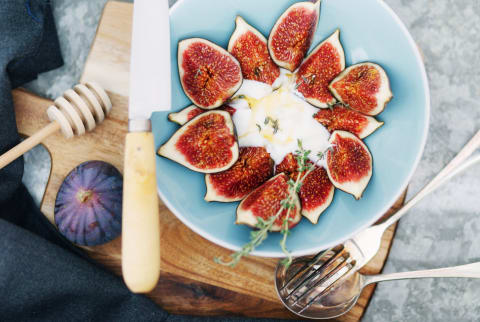Advertisement
The Top 10 Food Sources Of Gut-Healing Probiotics


Consuming plenty of probiotic-rich foods is one of the best things you can do for overall wellness. These beneficial bacteria help nourish our gut. Aside from supporting regular digestive function, this supports many key body processes. For example, the health of our intestinal tract plays a major role in how effectively our body absorbs and utilizes nutrients. This is also where a majority of our immune system function takes place, and our gut health also affects the production of mood-regulating neurotransmitters like serotonin.
As a dietitian and health coach, I help my clients find easy, delicious ways to work gut-nourishing foods into their day. There are many different types of probiotic bacteria that all do various things in the body, so it’s important to mix up food sources and make sure any probiotic supplements we take provide several strains.
Here are 10 great probiotic foods to try:
1. Yogurt
Yogurt makes a delicious base for a breakfast or snack with fruit, nuts, or seeds. A great source of both protein and naturally occurring complex carbs, it’s a good pre- or post-workout choice. Yogurt is also wonderful in dressings and marinades. Just avoid sweetened varieties to save yourself the negative effects of added sugar and other additives. For those who don’t eat dairy, there are a lot of cultured nondairy options on the market, but scope out the label first to see what’s in there.
2. Kefir
Kefir is another fermented dairy product with a thinner consistency than yogurt. It’s great for drinking, adding to smoothies, or enjoying with cereal, overnight oats, or chia pudding as a sub for milk. Kefir has a very low lactose content (most varieties are about 99 percent lactose-free), so some people who are sensitive to other dairy may tolerate kefir just fine.
3. Kimchi
4. Sauerkraut
Sauerkraut, which is made of fermented cabbage, has been a favorite in Central Europe for hundreds of years. Enjoy sauerkraut tossed into salad, as a topping for grain bowls, or with eggs. It also makes a delicious addition to sandwiches. Sauerkraut comes in a variety of styles and flavors. If you hear it making fizzy noises, don’t freak out—that’s actually a totally normal result of the fermentation process, which continues after packaging.
5. Miso
Miso is a smooth, salty soybean paste used frequently in Asian cooking. It’s made by fermenting soybeans, barley, and brown rice along with other grains with Aspergillus oryzae. Available in many varieties, the most common ones you’ll see in stores are white, yellow, and red. Use miso paste in dressings, sauces, and marinades or in soups. My personal favorite way to enjoy miso is to mix it with tahini, apple cider vinegar, and water to make a seriously delish dressing that adds a note of umami goodness to all kinds of things. I also love to make wild salmon in a miso-based marinade with olive oil, garlic, and maple syrup. Just note that miso is not a gluten-free food, so avoid this one if you’re gluten-sensitive.
6. Tempeh
Tempeh is a soybean product that’s fermented using a mix of live mold. It has a firm texture and slightly tangy taste. Cut into piece or strips and brown in a skillet or bake it, to enjoy as a protein option for all kinds of dishes. You can also crumble it to use in soups, stews, and stir-fry.
7. Natto
Natto is a traditional Japanese breakfast food made by soaking and then steaming or boiling whole soybeans. After that, a bacteria called Bacillus subtilis is added and the mixture is allowed to ferment. It has a distinct scent and texture that can be an acquired taste, but once you get past that, you’ll enjoy its nutritional benefits. It’s also a great source of protein, fiber, vitamins, and minerals.
8. Kombucha
Kombucha is a tangy fermented tea beverage. Keep in mind that it does contain a tiny amount of alcohol (around 0.5 percent) and caffeine, so take that into account if you’re sensitive. Traditional recipes call for sugar (it provides food for the bacteria to feed on), so check the label to see how much is in there.
9. Sourdough bread
If you’re someone who wouldn’t dream of cutting bread from their diet, try sourdough. It’s fermented using lactobacillus cultures and traditionally contains mostly whole wheat and live yeast, which means that it may stay fresh longer than white bread or other breads made with dried yeast—no preservatives required. That said, the cultures don’t survive the baking process, but the lactic acid2 produced helps decrease phytic acid in the bread so the body can more effectively utilize the nutrients we eat.
10. Dark chocolate
Dark chocolate is considered a prebiotic food, meaning that it provides fibers that act as food for the probiotic bacteria to feed on. Studies have also shown3 that cocoa can benefit the microbiota similarly to other probiotic foods. A couple of squares of high-quality dark chocolate makes a great addition to your day.
Want to make your own probiotic-packed food for just pennies at home? Fermenting is WAY easier than you think—here's how to do it.